Huh????
http://www.cbsnews.com/stories/2011/06/18/earlyshow/saturday/main20072225.shtml?tag=contentMain;contentBody
How can the editors at Health magazine expect me to believe that I should eat TOTAL cereal to get more iron? I wouldn't touch that processed crap with a ten foot pole. I've said it before and I'll say it again. LABELS are for CANS not for PEOPLE!
But just what is IRON and what does it do for our health? And what are some good sources of iron from fruits and vegetables? According to healthaliciousness.com this is what iron is and what iron does:
Iron is an essential mineral used to transport oxygen to all parts of our body. A slight deficiency of iron causes anemia (fatigue/weakness), and a chronic deficiency can lead to organ failure. Conversely, too much iron leads to production of harmful free radicals, and interferes with metabolism causing damage to organs like the heart and liver. Iron which comes from fruits and vegetables is well regulated by the body, so overdose is rare and usually only occurs when people take supplements. Contrary to popular belief, fruits and vegetables can be a good source of iron, in addition, vitamin A foods, which are mostly fruits and vegetables, help increase the absorption of iron into the body. The current recommended daily allowance for iron is 18 milligrams (mg). Below is a list of fruits and vegetables high in iron.
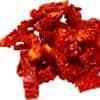
| Iron 100g | Iron in 1 Cup | Iron in 1 Piece |
| 9mg | 5mg | 0.2mg |
| 51% RDA | 27% RDA | 1% RDA |
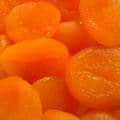
| Iron per 100g serving | Iron in 1 Cup |
| 6mg | 7.5mg |
| 35% RDA | 42% RDA |

| Iron per 100g serving | Iron in 1 Cup | Iron in 1 Tablespoon |
| 6mg | 4mg | 6mg |
| 34% RDA | 21% RDA | 1% RDA |

| Iron per 100g Serving | Iron in 1 Cup |
| 3.5mg | 6.5mg |
| 20% RDA | 36% RDA |

| Iron per 100g | Iron in 1 Ounce |
| 3.3mg | 1mg |
| 18% RDA | 5% RDA |
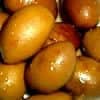
| Iron per 100g | Iron in 1 Large Olive |
| 3.3mg | 0.1mg |
| 18% RDA | 1% RDA |
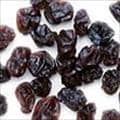
| Iron per 100g | Iron in 1 Cup |
| 3mg | 4.7mg |
| 18% RDA | 26% RDA |
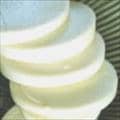
| Iron per 100g | Iron in 1 Cup | Iron per Piece |
| 3mg | 4.6mg | 1mg |
| 17% RDA | 25% RDA | 6% RDA |
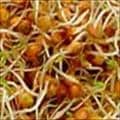
| Iron per 100g serving | Iron in 1 Cup |
| 3mg | 2.5mg |
| 17% RDA | 14% RDA |

| Iron per 100g serving | Iron in 1 Cup Chopped |
| 549mg | 961mg |
| 16% RDA | 27% RDA |
BUT WAIT!!! What provides the most iron?
I never would have guessed it...but the answer is CLAMS!!
Surprise! Clams take the top prize for providing the most iron. Three ounces of the shellfish provide 23.8 mg of iron and 126 calories.
Whether you like them raw on the half shell or cooked in your clam chowder, clams are also a surprising king of the superfoods: clams are also a top source of potassium and Vitamin B12.
Clams are unlikely to be contaminated, and according to the Environmental Defense Fund's Seafood Selector, the farming of the most common clams in the U.S. (northern quahogs) does little ecological damage.
Recipes:
Linguine with White Clam Sauce
Read more: http://www.thedailygreen.com/healthy-eating/eat-safe/top-iron-sources-44111008#ixzz1Pknxu8nJ

No comments:
Post a Comment